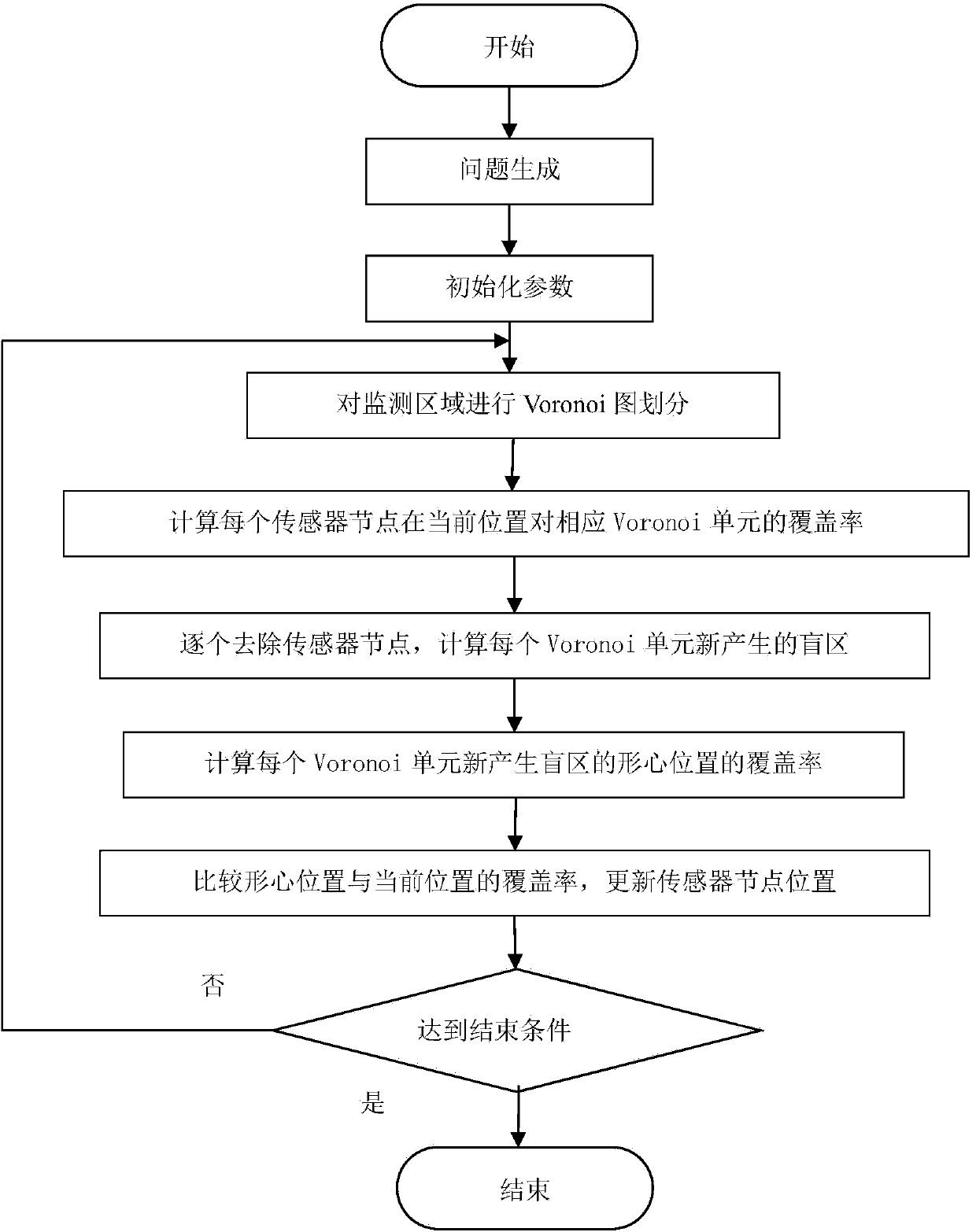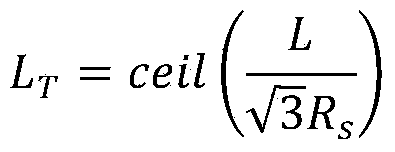Wireless sensor network node coverage optimization method based on Voronoi diagram for blind area
A wireless sensor and sensor node technology, applied in the field of optimization of wireless sensor network node coverage control, can solve problems such as blind spots in target points
- Summary
- Abstract
- Description
- Claims
- Application Information
AI Technical Summary
Problems solved by technology
Method used
Image
Examples
Embodiment Construction
[0064] The method of the invention will be further described below in conjunction with the accompanying drawings.
[0065] The wireless sensor network coverage optimization problem model is usually established in this way.
[0066] (1) Assuming that a two-dimensional plane T of size L×W is the monitoring area, randomly throw N sensor nodes S within the range of T, and move N sensor nodes S to maximize the coverage CR of the monitoring area T .
[0067] (2) Sensor node set S={s 1 ,s 2 ,...,S N }, all nodes are isomorphic nodes and have the same perception radius R s And communication radius R c , The position of each node is denoted as s i =(x i ,y i ).
[0068] Discretize the monitoring area T into a×b target points, and record the position of each target point as t j =(x j ,y j ), where j∈[1,a×b]. The higher the density of the target point, the higher the accuracy of the coverage.
[0069] The invention uses the Boolean perception model to calculate the perception probability Target...
PUM
 Login to View More
Login to View More Abstract
Description
Claims
Application Information
 Login to View More
Login to View More - R&D
- Intellectual Property
- Life Sciences
- Materials
- Tech Scout
- Unparalleled Data Quality
- Higher Quality Content
- 60% Fewer Hallucinations
Browse by: Latest US Patents, China's latest patents, Technical Efficacy Thesaurus, Application Domain, Technology Topic, Popular Technical Reports.
© 2025 PatSnap. All rights reserved.Legal|Privacy policy|Modern Slavery Act Transparency Statement|Sitemap|About US| Contact US: help@patsnap.com



